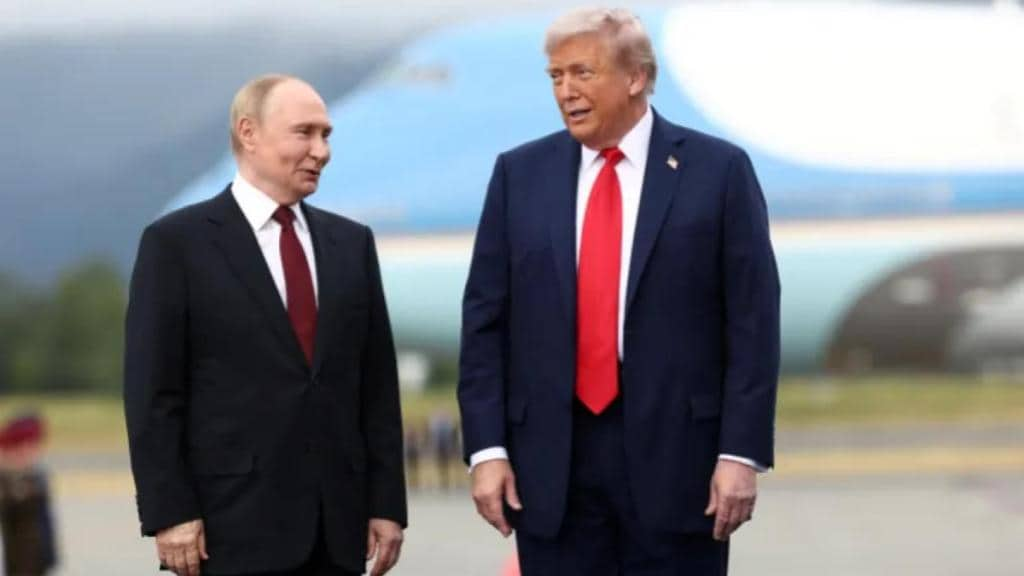Ahead of Ukrainian President Voldymyr Zelenskyy’s meeting with US President Donald Trump in Washington, DC, reports revealed that their Russian counterpart had named full control over the Donbas region as his price for a lasting peace deal in the face of Russia’s war in Ukraine. The region in question comprises key provinces Donetsk and Luhansk that have long been central to Russia’s raging onslaught on Kyiv.
With the emergence of Putin’s reported demand during the Alaska summit this past Friday, POTUS Trump also made a noticeable U-turn, switching from his previous propositions of a ceasefire to a permanent peace deal. He is since believed to have relayed the message to Zelenskyy, who reiterated his negative response to surrendering Ukraine’s industrial heartland, with European allies having also emphasised the need for the country’s “territorial integrity” to be respected.
What is the Donbas region?
Russia occupies nearly 20% of Ukraine. Of these regions, it has control over almost all of Luhansk, while occupying about 70% of Donetsk in the industrial Donbas region, which is short for “Donets Coal Basin.” Putin first breached it during an offensive in 2014 (when Crimea was seized), and now it is believed that about 88% of Donbas is controlled by Russia.
Ultimately, a significant portion of the population in these regions already speaks Russian. And yet, a Ukrainian poll in May 2022 indicated that 82% of Ukrainians in the territory taken over by Russia were no longer pro-Russian, as cited by BBC.
However, until the mid-19th century, the Donbas was scarcely populated, according to DW. Nonetheless, it eventually became one of the most crucial Russian industrialisation hubs due to its coal reserves. Donbas, though not a part of Ukraine during its short-lived independence in 1918, was included in the Ukrainian Soviet Socialist Republic after the Russian Civil War.
In 2014, pro-Russian separatists declared the oblasts of Luhansk and Donetsk as independent “people’s republics,” and subsequently Moscow took over more than a third of Ukraine’s eastern territory.
Zelenskyy has maintained that Russia launched its years-long battle for the Donbas region and Ukrainian forces had long been anticipating it. Meanwhile, Putin has pushed baseless allegations that the eastern side of Ukraine had been subjected to genocide by the country. With Moscow failing to take over Kyiv, Russia switched its tone to highlighting its “main goal” as the “liberation of Donbas.”
Why is Donetsk so important?
Donbas overall constitutes as the highly coveted industrial hub due to the presence of the coal basin along the Donets Ridge and River. With about 30% control over its Donetsk province, Ukraine still maintains some charge over the region. Surrendering it would ultimately give Russia access to the land corridor that bridges Crimea and Luhansk and more.
Giving up Donetsk Oblast would also mean that Ukraine abandons its “fortress belt,” thus losing its critical defensive position, as per the Institute for the Study of War (ISW). Ukraine’s 50 km long fortress belt, in turn, makes up for four big cities and numerous towns going north to south along the H-20 Kostyantynivka-Slovyansk highway.
Over the past decade, Ukraine has significantly invested time and money to reinforce it, building defensive infrastructure in and around the settlements. “Ceding Ukrainian-held parts of Donetsk Oblast would place Russian forces on the borders of Donetsk Oblast, a position that is significantly less defensible than the current line,” noted the ISW. The institute’s analysis also reveals that ceding the currently Ukraine-controlled Donetsk Oblast would pull Russian forces 82 km further west in the country.

